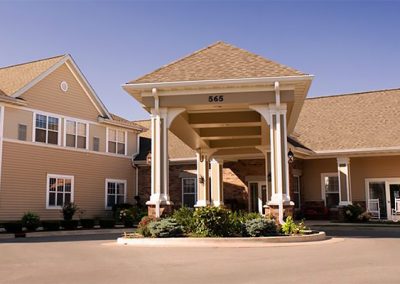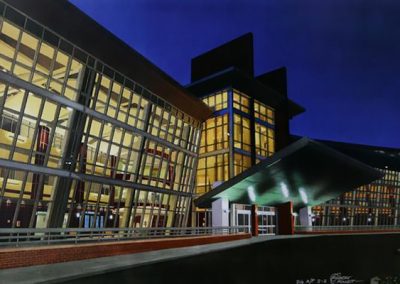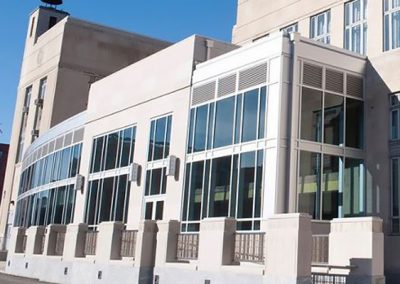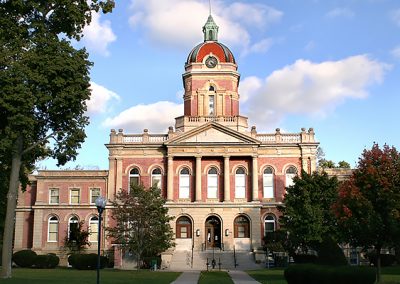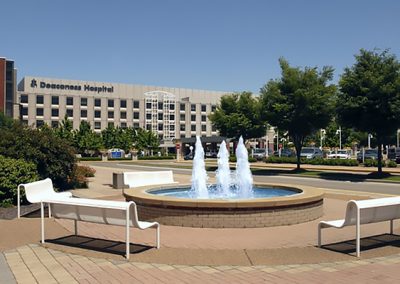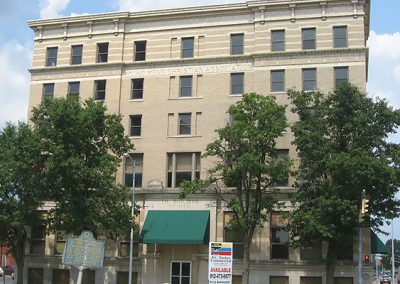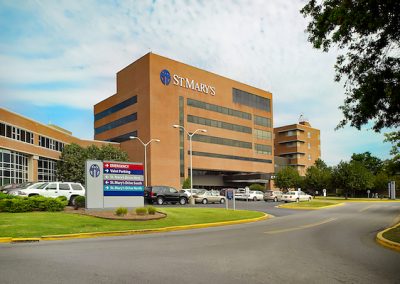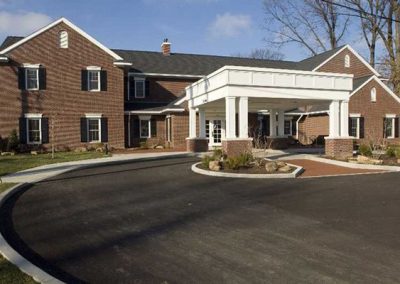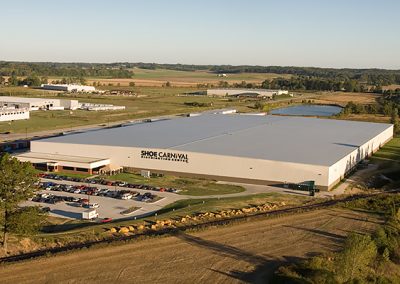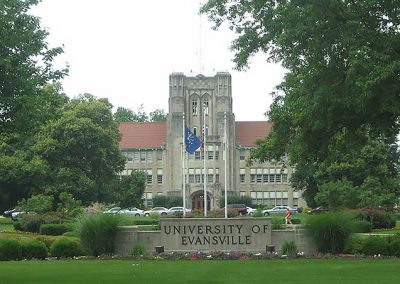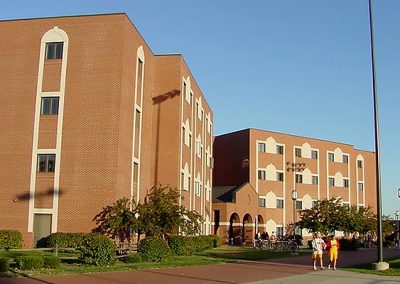Frequently Asked Questions
What determines where and when sprinklers are required?
Building codes over the past two decades have increasingly called for sprinklers throughout buildings for life safety, especially buildings in which rapid evacuation of occupants is difficult or the hazard posed by contents is high.
Why are there additional local ordinances?
Where the building codes don’t go far enough, many states and cities enact special tough sprinkler ordinances. The State of West Virginia, for example, requires sprinklers throughout all new buildings exceeding 40 feet in height. The city of Oak Brook, Illinois, requires sprinklers throughout all new buildings exceeding 1,000 square feet in area except single-family dwellings. Some communities, such as San Clemente, California, and Greenburgh, New York, require fire sprinkler protection even in new single-family homes.
What is retrofit legislation?
In addition to requiring sprinklers throughout new buildings, some cities have encouraged sprinkler installation in existing buildings. These include New York City’s landmark Local Law 5 for high-rise office buildings, and a Chicago ordinance requiring sprinklers throughout all nursing homes.
High-rise hotels have been required to retrofit with fire sprinklers in the states of Nevada and Florida, and in the city of Honolulu, Hawaii.
Recent high-rise retrofit laws include those enacted in Atlanta in 1989 and in Philadelphia in 1991.
What’s happening outside the U.S.?
In some countries, such as Japan, automatic fire sprinkler systems are used almost exclusively for life safety protection, and are being required throughout new and existing buildings.
How do sprinklers operate?
Automatic fire sprinklers are individually heat-activated, and tied into a network of piping with water under pressure. When the heat of a fire raises the sprinkler temperature to its operating point (usually 165ºF), a solder link will melt or a liquid-filled glass bulb will shatter to open that single sprinkler, releasing water directly over the source of the heat.
Why are sprinklers so effective?
Sprinklers operate automatically in the area of fire origin, preventing a fire from growing undetected to a dangerous size, while simultaneously sounding an alarm.
Automatic fire sprinklers keep fires small. The majority of fires in sprinklered buildings are handled by one or two sprinklers.
Why are sprinklers important for life safety?
Sprinklers do not rely upon human factors such as familiarity with escape routes or emergency assistance. They go to work immediately to reduce the danger.
Sprinklers prevent the fast developing fires of intense heat which are capable of trapping and killing dozens of building occupants.
What about smoke?
Smoke, a by-product of fire, is generally the cause of death to building occupants. Although smoke is produced as sprinklers extinguish a fire, such quantities of smoke are less than those which would be produced by an unsprinklered fire permitted to grow.
Who decides design and installation procedures for sprinkler system?
Proper design and installation of sprinkler systems is standardized nationally in a consensus standard promulgated by the National Fire Protection Association – NFPA 13.
A basic premise of proper sprinkler protection is that sprinklers be installed throughout all building areas. Partial sprinkler protection is a game of chance, since a fire originating in an unsprinklered area can overpower sprinklers given a head start.
What is the life safety record for fully sprinklered buildings?
Aside from fire fighting and explosion fatalities, there has never been a multiple loss of life in a fully sprinklered building due to fire or smoke. Individual lives have been lost when the victim or his clothing or immediate surroundings became the source of the fire.
A National Fire Protection Association study for the years 1971-1975 found that approximately 20 lives are lost each year in this country in sprinklered buildings, as compared to approximately 4,000 per year in unsprinklered buildings. Some 68% of the lives lost in sprinklered buildings were due to explosions, and an additional 18% were due to the fact that the fire originated in an unsprinklered area of the building.
How reliable are fire sprinklers?
All fire protection features have a reliability factor. Walls and shafts can be breached by means of poke-throughs and building alterations. Exit doors can be blocked or locked.
Sprinklers may be the most reliable fire protection system known. Detailed fire records for Australia and New Zealand (where fire must be reported) for the years 1886 through 1968 showed that 99.76% of all fires were extinguished or controlled by the sprinklers. Fire records in this country are less dependable due to lack of full reporting, especially for small fires where the sprinklers are successful. Nevertheless, the range includes a 96.2% success record reported by the National Fire Protection Association for the years 1925 through 1969, 98.4% success record for New York city high-rise buildings between 1969 and 1978, and a 98.2% success record for U.S. Department of Energy facilities between 1952 and 1980.
How can you be sure a system will operate when needed?
Electrical supervision of sprinkler systems to monitor valves and water flow is a major plus in assuring system reliability and effectiveness, and is required by many building codes for large and important system installations.
Can sprinklers discharge accidentally?
Loss records of Factory Mutual Research indicate that the probability of a standard response spray sprinkler discharging accidentally due to a manufacturing defect is only 1 in 16,000,000 sprinklers per year in service.
What are “trade-offs”?
The system cost can often be offset by insurance savings, and by specific design alternatives or “trade-offs” permitted by most building codes in view of the superior protection afforded by sprinklers. These trade-offs often include reduced fire-resistant requirements for structural components, longer exit travel distances, and larger building areas and heights.
Aren’t sprinklers ugly?
Due to advances in sprinkler technology, sprinklers look better than ever, if you can see them at all. Sprinklers can be concealed behind ceilings, out of sight until needed to extinguish a fire. Sprinklers are also available in a range of colors and sizes to blend into the background of any room.
What about water damage?
Reports of water damage due to fires in sprinklered buildings are often exaggerated due to comparisons with the small fire loss which occurs thanks to the sprinklers.
The amount of water which is put on a fire by fire department hoses in an unsprinklered building fire is nearly always tens to hundreds of times more than that which sprinklers would have discharged. During a fire, only those sprinklers closest to the fire activate, limiting the total amount of water needed. The fire damage, as reflected by insurance claims, is also many times greater.
There have been hundreds of multiple-death (three or more people killed) building fires in the United States since fire sprinklers were invented. These fires, all in unsprinklered buildings, have killed thousands of people, not to mention the property damage. A few of the more notable fires are listed here, though, unfortunately, the complete list is much longer. (Number of deaths in bold type.)
How often should my system be inspected?
The National Fire Protection Association publishes NFPA 25 Inspection, Testing and Maintenance of Water-Based Fire Protection Systems. This document recommends that control valves without electronic supervision be checked on a weekly basis, just to make sure that they are in the open position. Other system components have different requirements. Check with the NFPA 25 or the manufacturers’ literature for details.
At least four times each year, a full sprinkler system inspection should be performed by a knowledgeable professional. Some states and cities require more frequent inspections. Most sprinkler contractors offer economical long-term service agreements. These contractors can provide you with the test certificates which will comply with your insurance company and local fire department inspection requirements.
Are there other times when the system should be checked by knowledgeable professionals?
Yes! Fire Sprinkler systems are designed to the conditions which exist, or are expected to exist, within a building when the sprinkler system is installed. After any changes to the building or the use of the building an analysis should be done to determine if the sprinkler system is adequate. Similarly, even if the building and its use remain the same, changes in the water supply or changes to equipment in the sprinkler system necessitate a reevaluation of the system. Any time a sprinkler system is reviewed for these reasons, it should be done by a fire sprinkler contractor or a registered fire protection engineer. The following is a partial list of situations where a full reevaluation should be performed.
- Change or addition of backflow preventer or water meter.
- Change of building occupancy or use.
- Change in building (walls, partitions, additions).
- Reduction in public water supplies (sometimes done in areas for water conservation).
Is there anything building occupants or employees can do?
Yes! Although members of the general public are generally not knowledgeable enough to inspect, test, or maintain a fire sprinkler system, there are a few simple ways in which they can help:
- Never paint any fire sprinkler.
- Never hang anything from any part of a fire sprinkler system.
- Never stack items close to fire sprinklers. (Tops of storage or furniture should be at least 18 inches below fire sprinklers.)
- Always report damage to any part of a sprinkler system immediately.
- Always make sure control valves are in the open position.
How does inspection affect my insurance rate?
Buildings which are completely sprinklered enjoy special reduced rates. However, if the insurance company does not receive verification of system inspection, penalties in the form of higher insurance rates apply.
The Insurance Services Office (ISO) publishes a Commercial Fire Rating Schedule (CFRS). Section 402 of the CFRS requires building owners to have annual inspections of sprinkler systems to enjoy the “sprinklered” insurance rate.
If an inspection is overdue for up to 12 months, a 5% penalty applies. If the inspection is overdue for 12-24 months a 20% penalty applies. If an inspection is 24-36 months overdue, a 60% penalty applies. If after 36 months an inspection is still not performed, a fully sprinklered building is rated as “Unsprinklered” for the purpose of insurance, with no credit allowed.
Check with your insurance carrier about the rate for your building. Even though it is fully sprinklered you may not be getting as big a discount you’re entitled to. Get your sprinkler system inspected and take full financial advantage of your fire sprinkler system.
Are there financial benefits other than insurance for maintaining a sprinkler system?
Yes! Regular inspections of fire sprinkler systems will help reveal problems (if they exist) long before they become major. Sprinkler system repair can then be scheduled for a convenient time, saving you the cost of unnecessary business interruption.
What about liability?
Recent court decisions have held building owners and managers liable because they did not have a fire sprinkler system in a building which had a fire. Even though sprinkler systems were not required in these buildings by fire or building codes, owners still had to pay out millions of dollars. Similarly, an owner or manager of a building with a fire sprinkler system would be held liable if he failed to maintain that system in a working condition.
In addition, owners and managers of commercial and business facilities have an obligation to maintain safe conditions for employees and occupants. By working in a sprinklered building, employees come to expect a certain level of protection. It is incumbent on the owner to maintain this level of protection.
The idea of having water at the ready can be a concern to some due to the prospect of water damage. It is increasingly recognized that less water is needed to suppress small fires than large fires, and that a sprinkler system typically uses less than one-tenth the water to control a fire than the fire department would use in a nonsprinklered building. But what happens if there is accidental leakage from the automatic fire sprinkler system?
The fire sprinkler industry takes many precautions to ensure than accidental leakage does not occur. The automatic sprinklers and other system components are tested and listed by Underwriters Laboratories and Factory Mutual Research Corporation to make sure that these devices are not prone to leakage. Component designs are typically tested for integrity at four to five times the maximum water pressures they will see in service, and every single sprinkler is tested at twice its maximum service pressure before it leaves the factory. As a final step in the installation process, the entire sprinkler piping system is also tested under an elevated pressure for a two-hour period, and any leaks must be located and corrected.
There have been some instances where the performance of an automatic fire sprinkler has been so efficient that it is not immediately apparent that a fire took place. But if an automatic sprinkler has discharged water in the clear absence of a fire, an investigation should be undertaken to determine why the sprinkler operated. In almost all cases, a reason can be found. Typically, the reasons include inadvertent overheating, freezing, mechanical damage, corrosion, or deliberate sabotage.
Overheating
Automatic sprinklers respond to heat, and cannot differentiate between “good heat” and “bad heat”. Where sprinklers are located very close to unit heaters, under skylights and in other areas exposed to high heat, the applicable rules of NFPA standard 13 – Installation of Sprinkler Systems require that higher temperature rated sprinklers be used. This means that the solder elements or glass bulbs used as the operating mechanisms will be designed to activate at temperatures of 200-300oF (93-149oC) instead of the normal 155-165oF (68-74oC). If new sources of heat are added, a qualified contractor should be hired to make the necessary modifications. Temporary heat-producing sources such as construction lighting and television cameras have also been known to activate sprinklers.
Freezing
Although special types of sprinkler systems are available for use in areas subject to freezing, most sprinkler systems are wet pipe systems, meaning that the piping is normally filled with water. If a system or even a small portion of a system is exposed to freezing temperatures, water in the piping can turn to ice, expanding in volume and producing thousands of pounds of pressure. Such pressures can break fittings, but can also force open the valve caps of sprinklers, resulting in apparent accidental discharge or leakage when the system subsequently thaws.
Mechanical Damage
The frame, the seat and the operating mechanism (solder link or glass bulb) of an automatic sprinkler together form a sealed unit that is expected to maintain its integrity, but also to operate efficiently if a fire ever threatens its protected area. The sprinkler parts are joined somewhat like a coiled spring, holding the energy needed to activate when released by heat from a fire. Mechanical impacts to sprinklers can result in damage and separation of parts. Although it is obvious that a large force can immediately open a sprinkler, it is less obvious that a smaller impact can do the same thing over time. For this reason, it is important that sprinklers be carefully handled during the installation process, and that the proper wrenches be used during their installation. Special wrenches are often required by the manufacturers’ literature to reduce the possibility of slippage that can damage the sprinkler operating mechanism, potentially resulting in a release of parts weeks or months later. Building renovations can also result in impacts of sprinklers, leading to an inadvertent discharge or leakage at a later date.
Corrosion
Corrosion can result in a weakening of parts, and a subsequent release of water. This can occur among very old sprinklers, or sooner with sprinklers installed in a harsh environment. Many fire codes require enforcement of NFPA 25 – Standard for the Inspection, Testing, and Maintenance of Water-Based Fire Protection Systems. This standard requires that the building owner replace sprinklers that exhibit corrosion, loading or other damage.
Deliberate Sabotage
Deliberate acts of sabotage must also be considered when investigating the reasons for sprinkler discharge. Vandalism and insurance fraud have been found in the past to be motivations for tampering with sprinklers.
Manufacturing Defect
The likelihood of an automatic sprinkler opening in the absence of the above reasons was historically found to be extremely low – on the order of one per year per sixteen million sprinklers in use. These statistics were based on the use of traditional sprinklers, however, not the more sensitive sprinklers of today that feature lighter operating mechanisms for enhanced fire performance. Although very rare, the possibility of a manufacturing defect can be considered when all other potential reasons for inadvertent operation have been ruled out. This could take the form of a problem in loading or tolerances on the parts. The sprinkler manufacturer should be contacted, and arrangements can be made for professional analysis.
Keys to proper analysis of the reasons for unexpected sprinkler discharge:
1. Salvage of all sprinkler parts
Pieces of the sprinkler operating mechanisms can often be located during clean-up activities and, like the sprinkler frame remaining in the piping, are extremely valuable in helping to determine the reason for sprinkler operation.
2.Complete observation of the surrounding physical environment
The history of the sprinkler is important. For newer sprinklers, this includes the conditions under which it was shipped to the jobsite, stored and installed. For sprinklers that have been in service for some time, the conditions of use include the possibility of damage from materials handling equipment, the potential exposure to freezing conditions, and the possibility of temporary heat sources.
Following an unexpected operation of a fire sprinkler, prompt and thorough collection of parts and data can mean the difference between an unexplained mystery and a documented problem. Better understanding of the reasons sprinklers operate accidentally will help ensure that fire sprinkler systems are there when needed…to protect lives and property.

